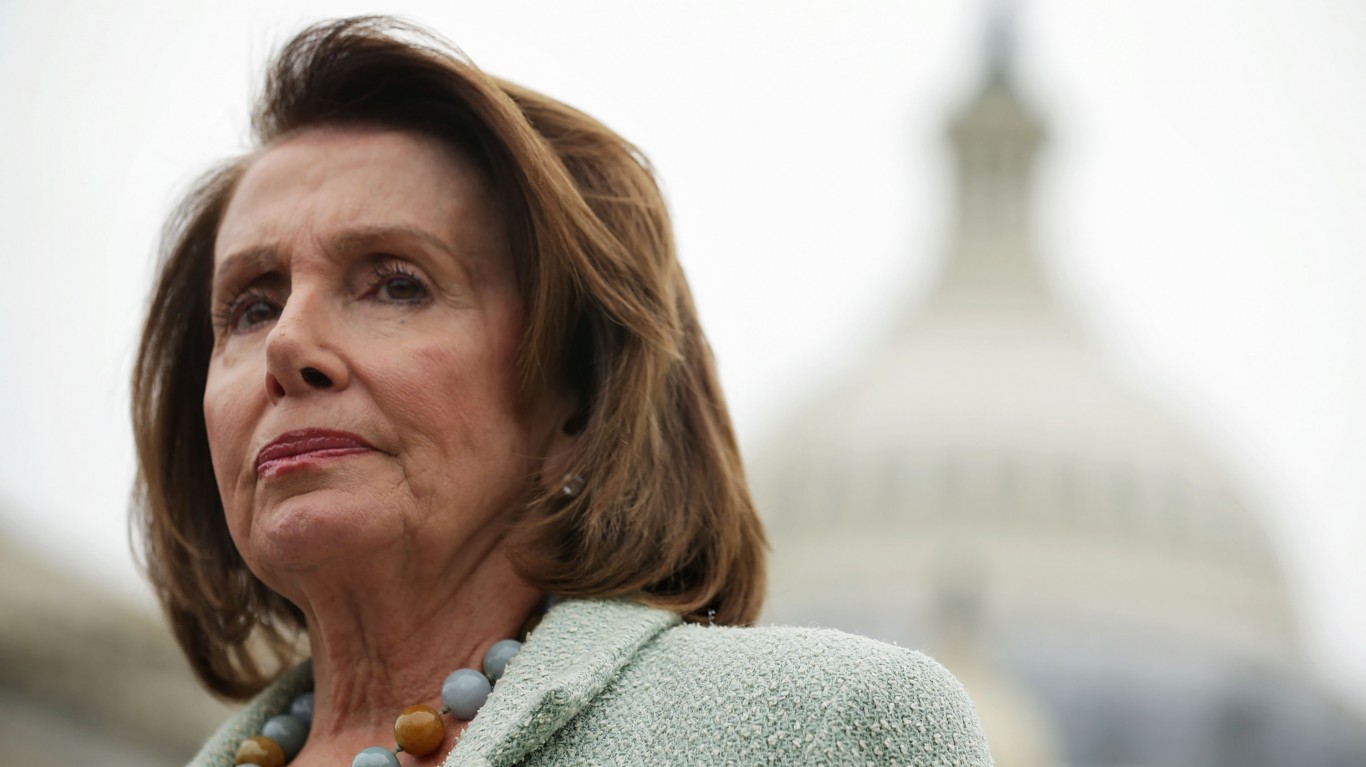A few of the top schools received a disproportionate share of the government’s spending on grants for R&D. Of all 896 schools that received federal money for R&D, approximately 20% of those funds went to just 10 universities, according to a study by the National Science Foundation. Johns Hopkins University alone received nearly $1.9 billion from the federal government in 2011, more than twice as much as any other university in the country. Based on data from the National Science Foundation, these are the 10 universities receiving the most federal funding for research and development.
Click here to see the 10 universities
The same schools consistently receive the most money every year, said Ronda Britt, a survey statistician with the National Science Foundation who oversaw the study. The universities “have big research programs that receive a lot of support year after year, and have a lot of infrastructure that helps them keep the money stable,” Britt said.
In addition to federal funding, the schools on this list also tend to have large endowments that support prestigious research facilities. All but one university on this list has an endowment of at least $1 billion, and five of them had among the 15 largest endowments as of 2012. Stanford University’s endowment of more than $17 billion is the fourth largest in the United States, while the University of Michigan’s is nearly $7.7 billion and is the seventh highest.
While the schools on this list rely on massive endowments, the federal government comprised the majority of funding for R&D in all cases. At John Hopkins, 88% of the research budget came from federal funds. At the University of Pennsylvania, 80% of all R&D money came from federal funds.
With the exception of John Hopkins, the Department of Health and Human Services provided the majority of funds the universities received from the federal government. All of these universities have medical schools, and the vast majority of R&D funding goes toward programs at many of the universities on this list. At Duke, $831 million of research expenditures went to its medical school, while just $191 million was spent elsewhere.
Between 1998 and 2004, the amount of money given to colleges for R&D, especially medical research grants, grew rapidly because the National Institute of Health — an agency of the Department of Health and Human Services (HHS) — doubled its budget during that time, Britt explained. Federal funding then flatlined until the past two years, when it once again grew due to increased funding for research authorized by the stimulus package passed in 2009.
Sequestration could pose a challenge for these schools. It is not clear if certain universities or projects will be hurt more than others, although many expect a squeeze on their finances, Britt noted. “But it depends on how much money these agencies have going to universities versus other places,” Britt said. “It is an open question until we see budgets for 2013 and 2014.”
Regardless, the schools already have started making plans for the sequester and are preparing students and staff for a host of different scenarios. The University of Washington indicated that it may lose up to $83 million in federal funding for projects, potentially grinding some projects to a halt and leading to layoffs. The sequester could cost Stanford University around $51 million in federal grants.
Based on data provided by the National Science Foundation, 24/7 Wall St. reviewed the 10 universities that received the most money from the federal government in fiscal 2011. The National Science Foundation provided breakdowns on the departments giving funding to universities, as well as also how much funding state and local governments, businesses and other groups gave to research and development. We also looked at each university’s endowment as of 2012, provided by the National Association of College and University Business Officers.
These are universities getting the most money from the government.
10. Duke University
> Total federal R&D grant money: $585 million
> Pct. R&D spending from government: 57.3%
> 2012 endowment: $5.56 billion
Duke University’s medical school alone spent a nation-high $831 million in research and development. More than 57% of the university’s total research budget came from the federal government, with the majority of those funds coming from HHS. Duke also relies on other sources for its funding. The university received more than $215 million from businesses in fiscal 2011 to fund research and development, more than any other school in the country.
9. University of Wisconsin, Madison
> Total federal R&D grant money: $594 million
> Pct. R&D spending from government: 53.4%
> 2012 endowment: $1.81 billion
The University of Wisconsin spent more than $1.1 billion on research and development in 2011, more than all but three other universities in the country. The university relied disproportionately on other sources of funding aside from the federal government compared to other schools. More than $125 million in funding came from nonprofits, more than any other university except from the University of California, San Francisco. The university also spent $220 million from its own funds, more than all but two universities in the country. Although the majority of Wisconsin’s federal R&D money came from HHS, the university also received more than $94 million from the National Science Foundation, more than all but seven schools.
Also Read: The Nine Most Common Airplane Accidents
8. University of California, San Diego
> Total federal R&D grant money: $637 million
> Pct. R&D spending from government: 63.1%
> 2012 endowment: $371 million
The University of California, San Diego, was one of just four schools that received more than $100 million from nonprofits in fiscal 2011, when it took in more than $111 million from such organizations. The school was also a leader in raising money for research from businesses, which provided more than $67 million to the school that year — among the most in the nation. The school was ranked as one of the largest recipients of federal research and development funds in the nation. However, the university is preparing for tougher times. According to its news center, through the first seven months of UC San Diego’s 2012-2013 fiscal year, “federally sponsored research awards are down by 8 percent. This is likely a result of agencies anticipating sequestration and slowing their rate of spending.”
7. Columbia University
> Total federal R&D grant money: $645 million
> Pct. R&D spending from government: 73.4%
> 2012 endowment: $7.65 billion
Federal funding accounted for the majority of the total $878 million research and development budget at Columbia University in 2011. Of the $645 million received in federal funding, close to $91 million came from the National Science Foundation, and more than $18 million came from NASA. But the federal government was not the school’s only major source of funds. Columbia received nearly $36 million in research funding from businesses and more than $65 million from nonprofit organizations, both among the highest totals in the nation.
6. Stanford University
> Total federal R&D grant money: $656 million
> Pct. R&D spending from government: 72.3%
> 2012 endowment: $17.04 billion
In fiscal 2011, Stanford University was a leader in raising R&D funds from not only the government, but nonprofit organizations and businesses as well. Still, the bulk of the school’s funding came from the federal government. Stanford took in nearly $72 million from the Department of Defense and $445 million from HHS, each 11th most in the nation. It additionally ranked as a top 15 school in procuring funding from NASA, the National Science Foundation and the Department of Energy. To account for the effects of sequestration, the school announced it would increase its subsidies to graduate students on research assistantships beginning in fiscal 2014.
5. University of Pittsburgh
> Total federal R&D grant money: $662 million
> Pct. R&D spending from government: 73.7%
> 2012 endowment: $2.62 billion
The University of Pittsburgh was the fifth largest recipient of federal funding from HHS, which accounted for nearly $576 million of the roughly $662 million it received in federal funds in fiscal 2011. The school also subsidized much of its research by spending more than $196 million of its own funds in 2011. Only three other schools, the University of Michigan, the University of Florida and the University of Wisconsin, spent more of their own funds on research and development.
Also Read: States with the Most Gun Violence
4. University of Pennsylvania
> Total federal R&D grant money: $707 million
> Pct. R&D spending from government: 79.8%
> 2012 endowment: $6.75 billion
As much as 80% of the University of Pennsylvania’s research funding came from the federal government — with the majority of that funding from HHS. Right before sequestration took effect, Penn reported that it expected to lose anywhere between $34 million and $42 million in research funds, with funds from the National Institute of Health — a part of HHS — expected to take a disproportionate hit. The university used just over $52 million of its own funds to pay for research and development in 2011, lower than any other university on this list.
3. University of Michigan
> Total federal R&D grant money: $820 million
> Pct. R&D spending from government: 64.1%
> 2012 endowment: $7.69 billion
While 64% of the University of Michigan’s R&D budget came from the federal government, the university spent a nation-high $363 million from its own money to finance research and development. The university also attracted attention when alumnus Charles Munger, the vice chairman of Berkshire Hathaway, recently pledged $110 million. The majority of the money will be used to construct a new graduate student resident hall, but $10 million will be used to fund fellowships across the university’s 19 different colleges and schools.
2. University of Washington, Seattle
> Total federal R&D grant money: $949 million
> Pct. R&D spending from government: 82.9%
> 2012 endowment: $2.11 billion
The University of Washington in Seattle acts as the primary public medical school for Washington, Alaska, Idaho Montana and Wyoming by offering subsidies to students from those other states. This is likely a reason the federal government gives them a lot of money. Although the majority of the money came from HHS, the university was the top recipient of money from the National Science Foundation, receiving more than $145 million in 2011. Researchers at the university said the institution could face $83 million in budget cuts due to the sequester. Among the concerns expressed are that entire labs could shut down and that employees whose money is tied to federal grants could lose their jobs.
1. Johns Hopkins University
> Total federal R&D grant money: $1.88 billion
> Pct. R&D spending from government: 87.8%
> 2012 endowment: $2.59 billion
No college received more money from the federal government than Johns Hopkins University, which raked in nearly $1.9 billion in 2011. Unlike the other universities on this list, money from HHS did not constitute the majority of funding. More than $609 million came from the Department of Defense, while more than $202 million came from NASA. The reason for this is that one division of the university, the Applied Physics Laboratory, employs thousands of engineers and scientists primarily in support of defense programs. The university also has managed to rake in billions from fundraising as well. Billionaire New York mayor Michael Bloomberg pledged $350 million to the university to expand research for issues such as global health and, as part of the total pledge, will provide $100 million for need-based scholarships for undergraduate students as well. He is the first person to give more than $1 billion to a single university over a lifetime.
Also Read: America’s Most Content (and Miserable) Cities
Want to Retire Early? Start Here (Sponsor)
Want retirement to come a few years earlier than you’d planned? Or are you ready to retire now, but want an extra set of eyes on your finances?
Now you can speak with up to 3 financial experts in your area for FREE. By simply clicking here you can begin to match with financial professionals who can help you build your plan to retire early. And the best part? The first conversation with them is free.
Click here to match with up to 3 financial pros who would be excited to help you make financial decisions.
Have questions about retirement or personal finance? Email us at Retire@a673b.bigscoots-temp.com!
By emailing your questions to 24/7 Wall St., you agree to have them published anonymously on a673b.bigscoots-temp.com.
By submitting your story, you understand and agree that we may use your story, or versions of it, in all media and platforms, including via third parties.
Thank you for reading! Have some feedback for us?
Contact the 24/7 Wall St. editorial team.






